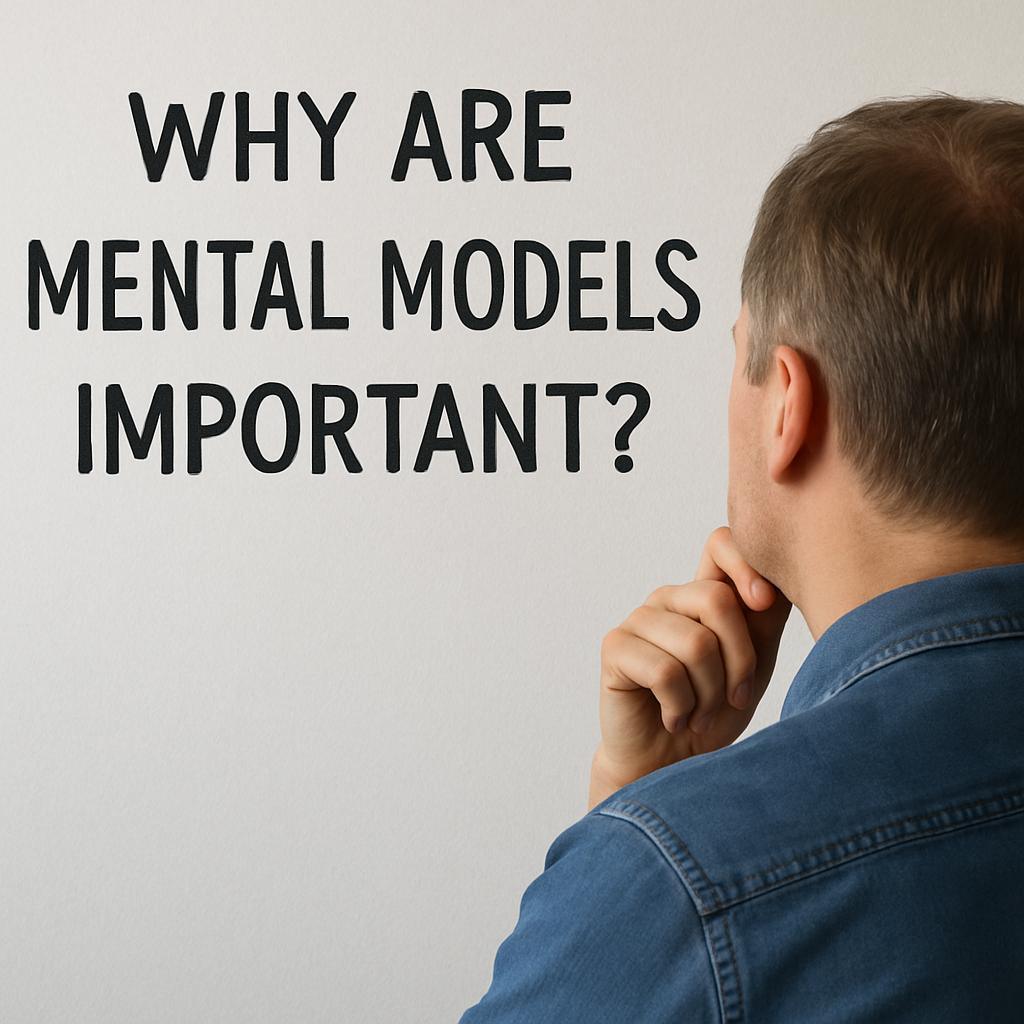Mental models are the ways we think about the world. They help us understand how things work and guide our decisions. Kenneth Craik first used the term in 1943. These models are like internal maps that help us see reality.
Imagine them as mental shortcuts. For example, the “illusion of control” shows how biases affect our choices. These frameworks make complex things simpler, in business, healthcare, or daily life. Philip Johnson-Laird’s 1983 work showed how mental models are key to language and reasoning.
Key Takeaways
- Mental models are cognitive frameworks that simplify how we understand systems and decisions.
- Coined in 1943, they’ve evolved into tools for reasoning, from economics to medicine.
- They influence everything from medical diagnoses to financial strategies, often unconsciously.
- Over 30 core models exist, like loss aversion or status quo bias.
- They shape communication gaps, like differing views on treatments between doctors and patients.
What Are Mental Models: A Comprehensive Definition
Understanding mental model definition begins with seeing their role as mental frameworks. They shape how we see the world. As James Clear notes, they help us simplify complex things. Let’s dive into their beginnings and effects.
The Origin of Mental Model Theory
The idea started in the early 20th century. Psychologist Kenneth Craik said in 1943 that we use mental models to predict what will happen. By 1927, Georges-Henri Luquet found out how kids create internal models. This influenced Jean Piaget’s work on how we grow mentally.
These early findings helped shape today’s study of mental models in psychology.
Mental Models vs. Cognitive Biases
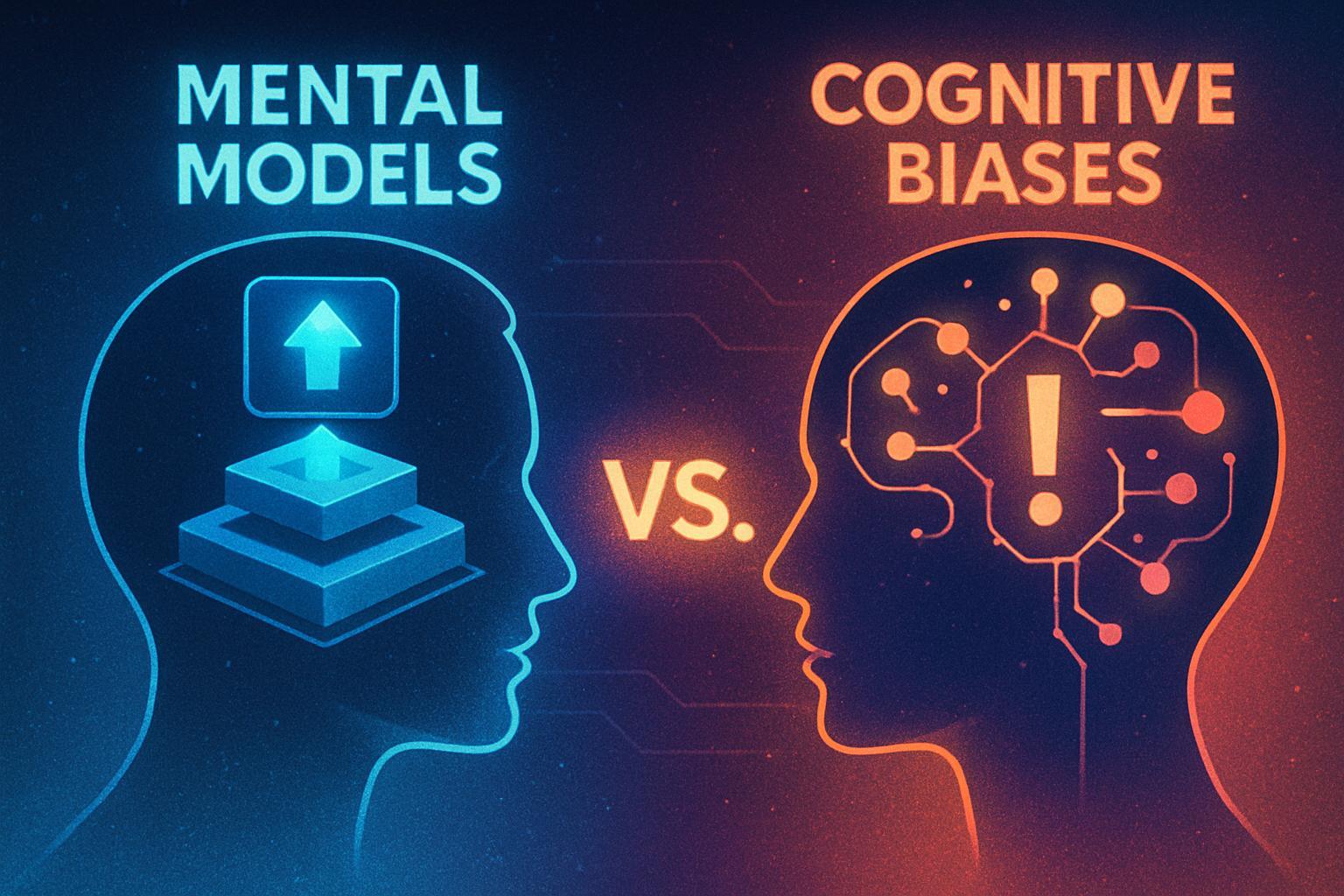
Mental models and cognitive biases are different. Mental models are tools for understanding systems, like the economy or how things work. Cognitive biases are mistakes in thinking, like always seeing things in a certain way.
Here’s how they compare:
- Mental Models: Tools for solving problems and making decisions
- Cognitive Biases: Mistakes in thinking that happen without us realizing it
How Mental Models Shape Our Thinking
Mental models help us make sense of the world. For example, a simple model might explain how a light switch works. More complex models track things like stock market changes.
When a product doesn’t match our mental model, like the Jeep gearshift issue, it can cause problems. Good systems fit with what users already know, making things easier.
By understanding these patterns, we can improve how we tackle challenges and seize opportunities.
The Historical Evolution of Mental Model Theory
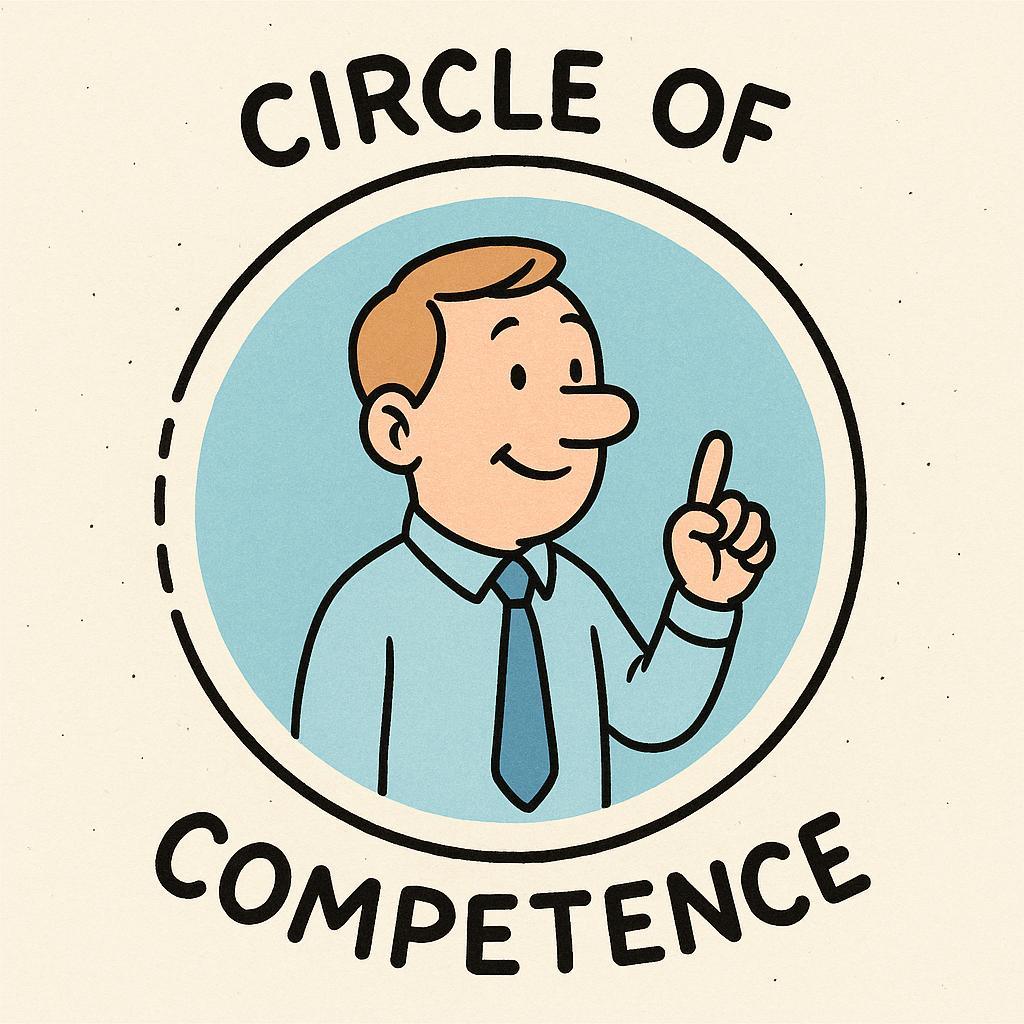
To understand mental models, we must look back to philosophy and then to psychology. Kenneth Craik’s 1943 idea that we mentally simulate possibilities was a start.
By the 1980s, scientists like Philip Johnson-Laird took it further with mental models in psychology. They showed how these frameworks influence our thinking and language.
Johnson-Laird’s 1983 book was key, breaking down complex systems into simpler forms. This work became a foundation for understanding cognitive frameworks.
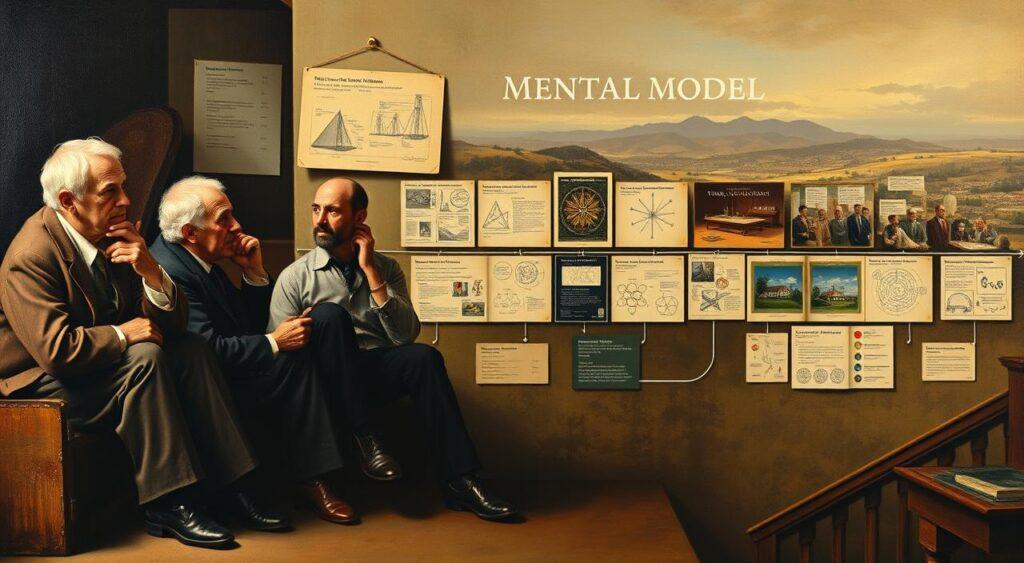
In 1983, Dedre Gentner and Albert Stevens connected mental models to design and education. They showed how these models help us understand new technology or interfaces. By the 1990s, thinkers like Charlie Munger applied these concepts to business.
Munger used mental model examples like “circle of competence” to make decisions. This shows how mental models are used in real life.
Today, research keeps improving our understanding of mental models. Studies link them to solving problems in AI and economics. Their journey shows our ongoing effort to understand how our minds map reality.
Why Mental Models Matter in Today’s World

“The best mental models are the ideas with the most utility. They are broadly useful in daily life. Understanding these concepts will help you make wiser choices and take better actions. This is why developing a broad base of mental models is critical for anyone interested in thinking clearly, rationally, and effectively.” – NN/g
Let’s explore three reasons why mental models are essential for thriving in today’s fast-paced world.
Mental Models as Decision-Making Frameworks
Tools like the Pareto Principle (80/20 rule) and cost-benefit analysis simplify complex decisions. Studies show that learning 80–90 core models can handle 90% of decision-making scenarios. These frameworks turn overwhelming data into clear steps.
For example, the opportunity cost model helps us understand trade-offs. Thecritical massmodel shows when an idea starts to gain traction.
How Mental Models Reduce Cognitive Load
Mental models act as shortcuts in our brains. They help us avoid analyzing every situation from scratch. For instance, theloss aversionmodel helps us gauge risks.
Having a variety of models prevents mental overload. This lets us focus on what’s truly important. Even flawed models, like stereotypes, show how our brains recognize patterns.
The Competitive Edge of Diverse Mental Models
Having a diverse set of mental models gives you an advantage. Charlie Munger’s “latticework” approach combines insights from various fields. Richard Feynman solved complex problems by applying models from different disciplines.
Arvid Kahl’s SaaS startup found success by applying the Goldilocks Rule. It found a market that was “just right” in size, earning $55k monthly revenue. Diverse models reveal solutions others might miss.
Using mental models from biology, economics, and more helps avoid blind spots. With the right frameworks, even complex challenges become manageable.
Mental Models Everyone Should Know
Learning about the main types of mental models helps us think clearer and solve problems better. These types of mental models are key to tackling both personal and work challenges. Let’s dive into the four main areas of this cognitive frameworks system.
“Managing mental models is a major breakthrough for building learning organizations.” — Peter Senge

- Mathematical and Scientific Models
- First principles thinking (Elon Musk’s approach to innovation)
- Law of large numbers for statistical reasoning
- Occam’s Razor prioritizes simplicity in solutions
- Psychological and Behavioral Models
- Cognitive biases like confirmation bias
- Reciprocity in social interactions
- Deliberate practice (Anders Ericsson) over the contested 10,000-hour myth
- The T-shaped model (McKinsey/IDEO) for cross-disciplinary skills
- Economic and Business Models
- Opportunity cost analysis
- Supply and demand equilibrium
- Comparative advantage in trade
- Network effects in tech ecosystems
- Systems Thinking Models
- Feedback loops to avoid unintended consequences
- Bottleneck analysis for optimization
- Controlling the center (chess strategy applied to business)
- Pareto Principle (80-20 rule) for prioritization
These mental model examples are most effective when used together. For example, Google’s Project Aristotle used psychological models to find what makes teams successful, like feeling safe.
Whether it’s improving software or business strategies, mixing different models helps us make better decisions. Start building your mental model toolkit today!
The Psychology Behind Effective Mental Models

“Mental models, in popular science parlance, have been described as ‘deeply held images of thinking and acting’. People are hardly conscious of them.”
Mental models in psychology are like hidden guides that shape our decisions. They develop from our experiences, like how infants understand physics by 6 months, as Spelke’s research shows.
These cognitive frameworks help us decide what to notice and remember. For example, 80% of adults get a ball’s path wrong because of their mental models, not physics.
- Early studies show causal mental models boost problem-solving accuracy by 30% compared to procedural knowledge alone (Kieras & Bovair, 1984).
- Children’s theory of mind develops by 3 months, letting them grasp others’ intentions—a foundational mental model for social interaction.
- Resistance to change persists: even after learning Newton’s laws, many retain childhood misconceptions about motion.
Neuroplasticity offers hope. While mental models often clash with new information, we can change them through practice. For example, bridging analogies techniques help shift ingrained views. Explore what are mental models to see how they shape behavior. By understanding their roots, we can refine these frameworks to align with reality—enhancing decisions and creativity.
Mental Models in the Business World

Business leaders around the world use applying mental models to tackle complexity. These frameworks help turn ideas into real strategies. They are key decision-making tools for innovation and risk management.
How Top CEOs Leverage Mental Models
Leaders like Jeff Bezos and Howard Marks make decisions based on types of mental models. Bezos uses the “regret minimization” framework. He focuses on long-term goals over quick wins.
He asks himself:
“What would I regret more—the decision I made, or the one I didn’t make?”
Mental Models for Organizational Problem-Solving
Teams do better when they share mental models. Agile methods boost productivity by 25%. They help teams make progress in small steps.
Companies like IDEO use systems thinking. This cuts down on misunderstandings and speeds up new ideas.
- First Principles Thinking cuts problem-solving time by 30%, per recent studies.
- Toyota’s lean manufacturing model reduced waste while boosting quality—proof of tangible ROI.
Case Studies: Successful Applications in Business
- Netflix moved from DVDs to streaming using disruption theory, a core mental model for market shifts.
- Berkshire Hathaway’s $700B+ valuation comes from Charlie Munger’s use of many frameworks.
87% of executives face decision fatigue. But, using mental models can cut down decision time by 50%. These frameworks help teams turn challenges into chances for growth.
The Latticework Approach to Mental Models

Charlie Munger, Warren Buffett’s partner at Berkshire Hathaway, believes in a broad approach to making decisions. He uses a latticework of mental models that combines insights from psychology, economics, and physics. Munger said, “80 or 90 important models carry about 90% of the freight” for making smart choices.
“All the wisdom of the world is not to be found in any one discipline.” — Charlie Munger

Munger’s framework includes models like opportunity cost analysis and inversion. He also sets clear boundaries of what he knows well. This helps him make decisions by focusing on what he understands best.
For example, Buffett only invests in businesses he can understand in five minutes. This method makes complex choices easier, like picking from 40,000+ global companies.
- Opportunity cost filter: Prioritize high-value options by dismissing 98% of weaker alternatives
- Physics principles: Leverage concepts like gravity (e.g., “what goes up must come down” in markets)
- Psychology traps: Spot biases like herd mentality to avoid poor decisions
The importance of mental models is clear in Munger’s “fat pitch” strategy. He waits for rare, high-impact opportunities. Critics say it takes time to learn, but the benefits are worth it.
By using knowledge from different fields, leaders can avoid blind spots. This is a valuable lesson for both executives and everyday people.
Building Your Personal Mental Model Toolkit
Starting a mental model toolkit begins with self-awarenessness. Identifying your current mental models shows how you tackle challenges. Ask yourself: What frameworks guide your decisions? Note any patterns in your problem-solving.
For example, the social comparison model might explain your reactions to promotions or feedback. Recognizing these patterns helps refine your thinking.
Identifying Your Current Mental Models
- Journal decisions: Note the logic behind choices, like choosing projects or solving conflicts.
- Test models against outcomes: Did relying on “social proof” lead to good or bad decisions?
- Challenge assumptions: Ask, “What if I approached this using the rational optimism model instead?”
Expanding Your Collection with Decision-Making Tools
Expand your toolkit by exploring models from fields outside your expertise. Start with interdisciplinary resources, like antifragility from systems theory or leverage from economics. Pair reading with practice: apply the cognitive efficiency model to simplify daily tasks.
Mix formal learning with informal discussions in communities to deepen understanding.
Mastery Through Applying Mental Models
Practice turns theory into habit. Try these techniques:
- Role-play scenarios: Use the Law of Contrast to analyze trade-offs in hypothetical choices.
- Pair models: Combine leverage with first principles thinking when planning projects.
- Reflect weekly: Track how models like second-level thinking improve long-term decisions.
Remember, mental models are living tools—upgrade them as you grow. Start small, stay curious, and watch how these frameworks transform your problem-solving agility.
Common Pitfalls When Applying Mental Models
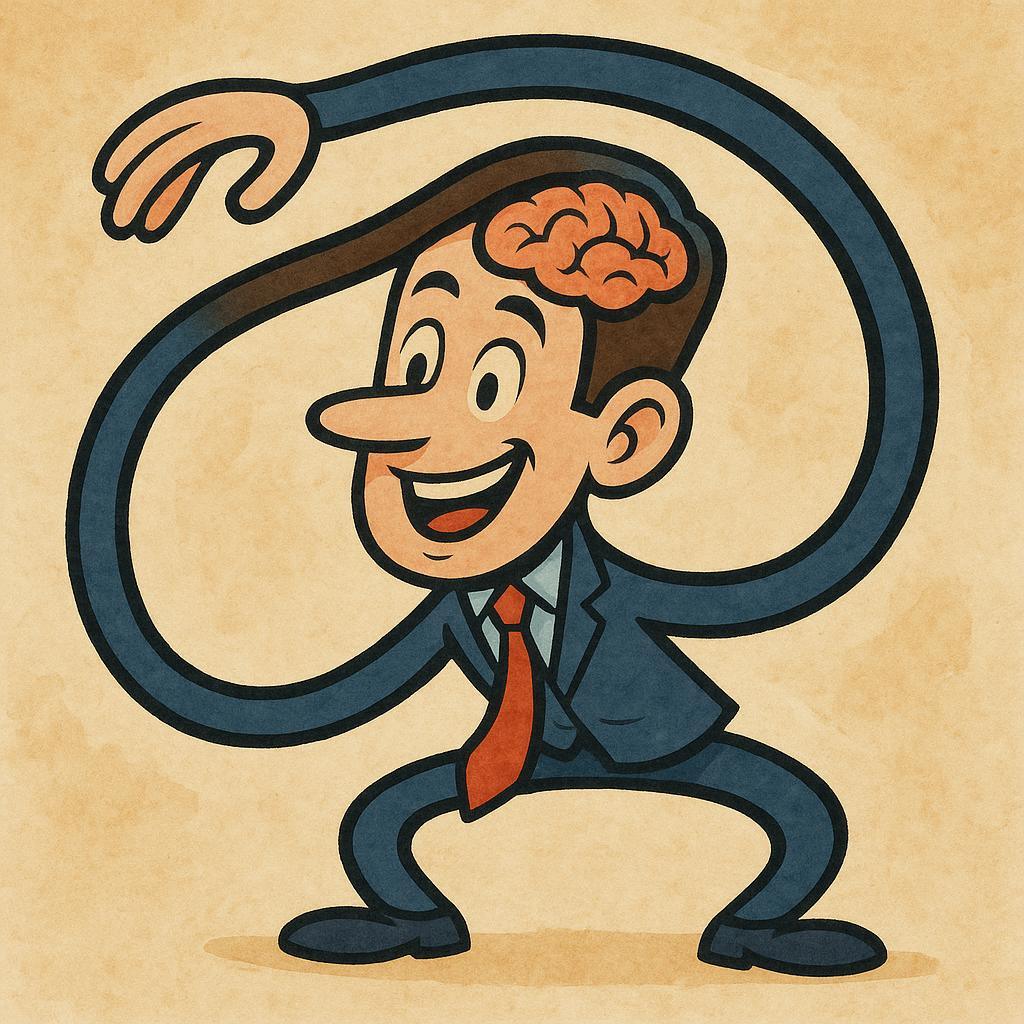
Mental models are flexible – considerably variable in positive as well as in negative sense; an information filter that causes selective perception, perception of only selected parts of information…
Even with theimportance of mental models, overreliance can turn them into crutches. Let’s explore the most frequent mistakes to avoid:

- Overreliance on favorites: Treating one model as a universal fix. For instance, forcing the Pareto Rule on every problem ignores unique variables.
- Blind spots: Models filter data, sometimes blocking critical clues. Confirmation bias traps users into ignoring contradictory evidence.
- Outdated frameworks: Using 20th-century business models in a digital economy risks obsolescence.
- Oversimplification: Reducing complex issues to basic models can overlook nuances. First-principles thinking works only when paired with context.
- Overconfidence: Believing models are flawless can lead to poor decision-making tools. Even the scientific method requires iterative testing.
Avoiding these traps means treating models as guides, not rules. Continuously question assumptions, cross-check with other frameworks, and update models as reality evolves.
Humility and flexibility keep mental models effective—not rigid dogma.
Mental Models and Creative Thinking

Mental models are not limits; they are starting points for creativity. Research shows that applying mental models can open up new views, breaking free from usual ways of thinking. For example, Richard Feynman solved problems by mixing physics with creative methods like “differentiation under the integral sign.” This shows how combining different areas can lead to new ideas.
Breaking Through Creative Blocks with Mental Models
Here are some ways to get past creative blocks:
- Inversion: Turn the problem upside down. Think, “What’s the opposite of this?”
- Analogical Thinking: Use ideas from other fields. Architects use biology’s “form follows function” in building design.
- Sketching: Use diagrams to help teams understand each other better. This is seen in design studies where shared visuals reduce communication barriers.
Combining Mental Models for Innovative Solutions
Innovation happens when different models meet. Steve Jobs combined calligraphy with technology, changing Apple’s design.
This is similar to the Team Creativity Model (TCM), which shows that shared mental models increase teamwork and creativity. Feynman said, “80 or 90 important models carry 90% of creative problem-solving.”
“The difference between average thinkers and innovators is their willingness to combine cognitive frameworks,”
say studies on interdisciplinary teams. Whether it’s designing apps or tackling climate issues, mixing models like systems thinking and game theory leads to new discoveries. By understanding how to mix these models, we can turn obstacles into opportunities for creativity.
Mental Models for Everyday Decision-Making
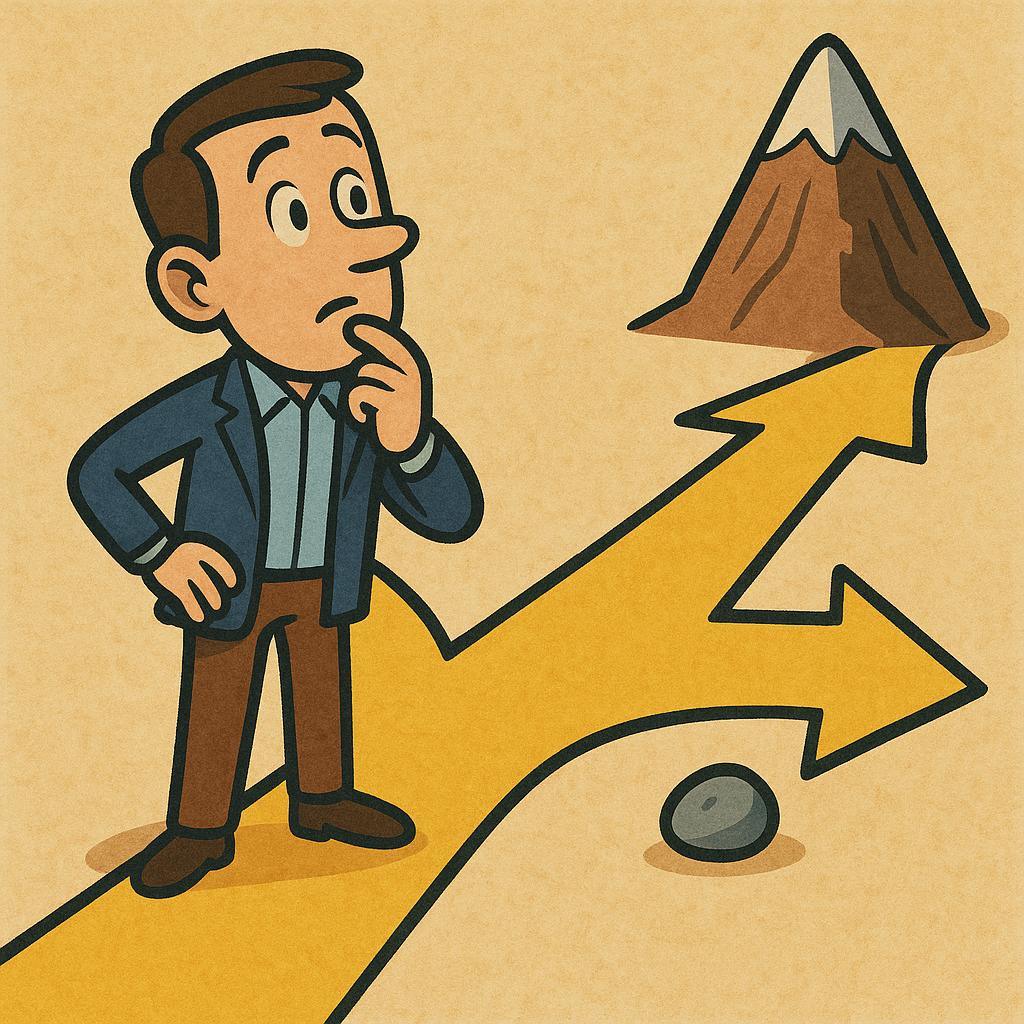
Everyday choices are important. They range from what to eat to which job to take. Decision-making tools based on mental models make these choices easier. By applying mental models, we can make better decisions.
Think about the opportunity cost when you spend money. Is that new gadget worth what else you could buy? The inversion model helps by turning problems into solutions. Instead of asking how to save time, ask what’s wasting it.
- Regret Minimization: Choose decisions that avoid future regrets. Is skipping this career risk worse than taking it?
- Pareto Principle (80/20): Focus on the 20% of habits that improve 80% of your life. This includes sleep and exercise.
- Eisenhower Matrix: Sort tasks into urgent and important quadrants. Ignore urgent but unimportant tasks.
Even small choices can make a big difference with practice. A blog post on decision-making suggests writing down options. Use models like ICE scoring to rank them. With time, these mental model examples become second nature.
Remember, it’s not about memorizing models but using them in your life. Start by tracking one decision a day with a model. Over time, you’ll have a set of tools for better choices.
How to Teach Mental Models to Others

Sharing mental models with others begins with making complex ideas simple. Whether you’re teaching kids or adults, the types of mental models must fit the audience. Let’s look at ways to make learning fun and effective.
Start Early: Building Foundations for Kids
Children learn through play and stories. Use these to introduce mental model examples like cause-and-effect or fairness. A
“Mental models can be built over time by our knowledge and experiences,”
shows how learning builds up. Games like “What happens next?” help kids see outcomes. This teaches them the importance of mental models in solving problems.
Workshops for Professionals: Bridging Gaps
In workplaces, workshops can unite teams by finding common mental models. Begin with simulations or case studies, like analyzing a project failure. This reveals gaps. Tools like decision journals help compare mental models with real results.
Remember, everyone uses mental models. But, if assumptions don’t match (like between managers and engineers), it can cause problems. Training should include group exercises to improve shared models.
Curated Resources for Lifelong Learning
- Books: “Thinking, Fast and Slow” (Kahneman) for cognitive biases
- Online: Systems Thinking Playbook by KnowledgeWorks for educators
- Tools: Mind maps or scenario-based apps to visualize models
When teaching, pair resources with reflection exercises. Ask learners to write about their current mental models before introducing new ones. This respects their knowledge while encouraging growth.
The Future of Mental Models in The Age of AI
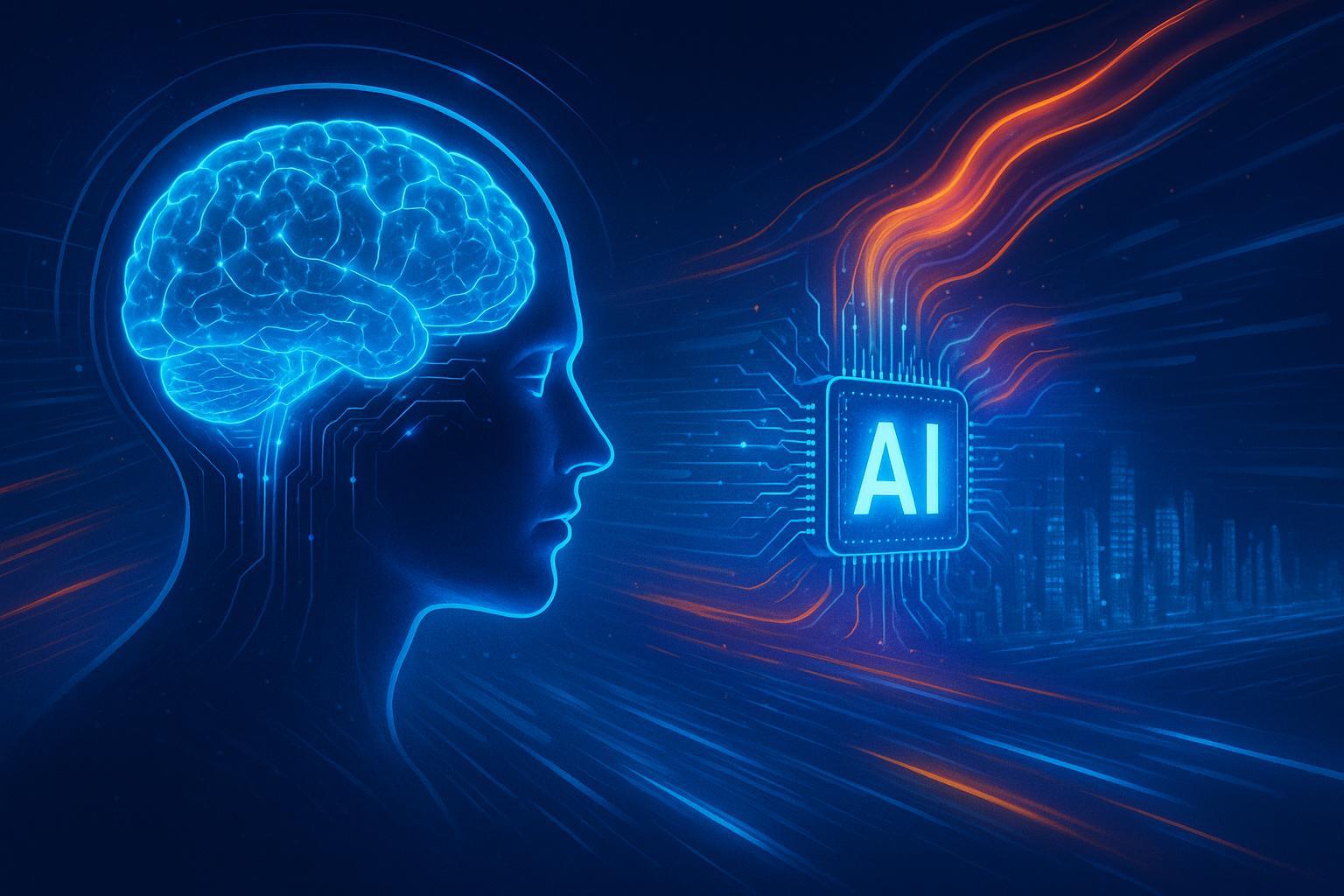
Artificial intelligence is changing our lives fast. The importance of mental models is growing. These cognitive frameworks help us understand AI and its goals. Think about this:
“Mental models are an internal representation of external reality”
—a concept now tested by AI’s evolving capabilities.
Imagine an AI assistant that learns from your choices or adapts to your input. Such systems need updated mental models to avoid confusion.
For example, users might think an AI is smarter than it is if it acts like a human. This can lead to frustration when it doesn’t think like us.
Clear communication about AI’s limits can help. OpenAI’s efforts to be transparent are a good start. This can reduce misunderstandings.
- Education must teach adaptive mental models to prepare for AI-driven changes.
- Companies need frameworks to explain how AI processes data and learns from interactions.
- Users benefit when systems guide experimentation, balancing guidance with autonomy.
Tomorrow’s mental models will mix human intuition with machine logic. Schools and workplaces should focus on learning tools that show applying mental models to AI.
By being flexible, we make sure these models help us understand, not hinder, our tech-driven world.
Conclusion
Mental models help us see the world and make decisions. They are like lenses that simplify complex things. What are mental models show that they are not perfect but very useful. They turn unclear situations into clear ones.
Using mental models means you can innovate and avoid mistakes. They help anyone make better choices. For example, the Eisenhower Matrix helps with task prioritization, and recognizing sunk costs helps avoid bad habits.
Mental models need to be updated and practiced regularly. Start with a few models that fit your goals, like Occam’s Razor for simplicity.
Sharing what you learn helps you understand it better. By being curious and practicing, you’ll face challenges with more confidence and creativity.
